
How to Do Blood Flow Restriction Training (BFR)
Blood Flow Restriction (BFR) Training is a Japanese muscle-building technique that occasionally makes its way into the mainstream. Peter Attia recommends it. NBA and NFL players use it. And you’ll see top bodybuilders and powerlifters swearing by it, too. I’ve been doing it on and off for over a decade, and it’s helped me add over two inches to my arms.
Restricting blood flow sounds strange and dangerous, but it helps you stimulate muscle growth with much lighter weights, making it one of the safer ways to stimulate muscle growth. It also seems to be quite good for our blood vessels. In fact, outside of athletes and bodybuilders, it’s most commonly used in rehab and with older lifters.
The research is promising, too, with the latest meta-analysis showing it can help with muscle and strength gains, at least under some circumstances.
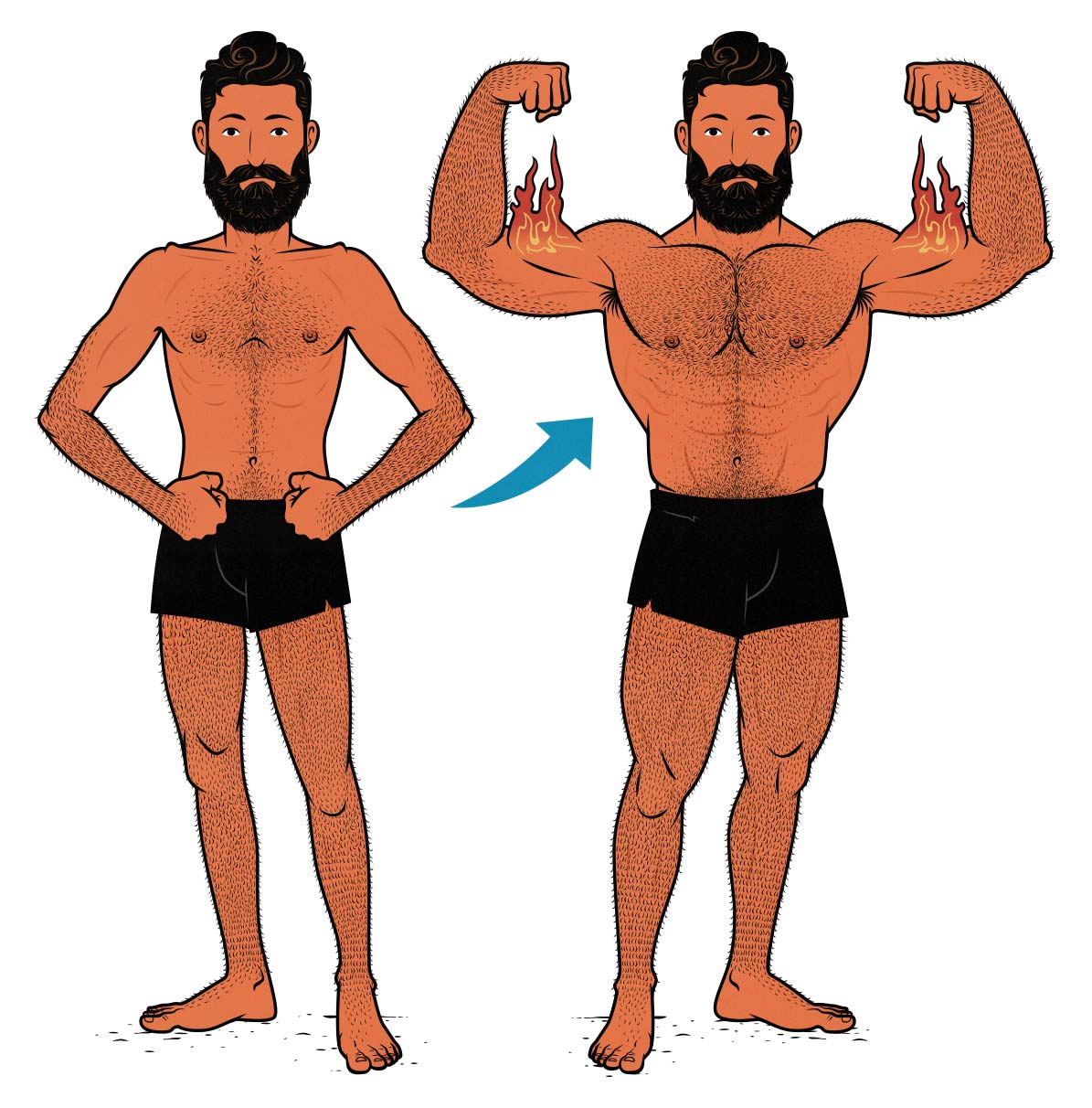
What is Blood Flow Restriction Training (BFR)?
Blood Flow Restriction Training, also known as BFR training, occlusion training, and KAATSU training, is when you restrict blood flow out of your limbs while training them. You can do this with a cuff, bandage, or tourniquet. Blood still flows into your muscles, but once it’s there, most of it gets trapped, creating fearsome muscle pumps.
It isn’t as weird as it sounds. When you lift weights, you naturally restrict blood flow. This is especially true of high-rep training. It pumps your muscles full of metabolites and other anabolic hormones, encouraging muscle growth. Blood Flow Restriction Training exaggerates this effect, ostensibly stimulating even more muscle growth.
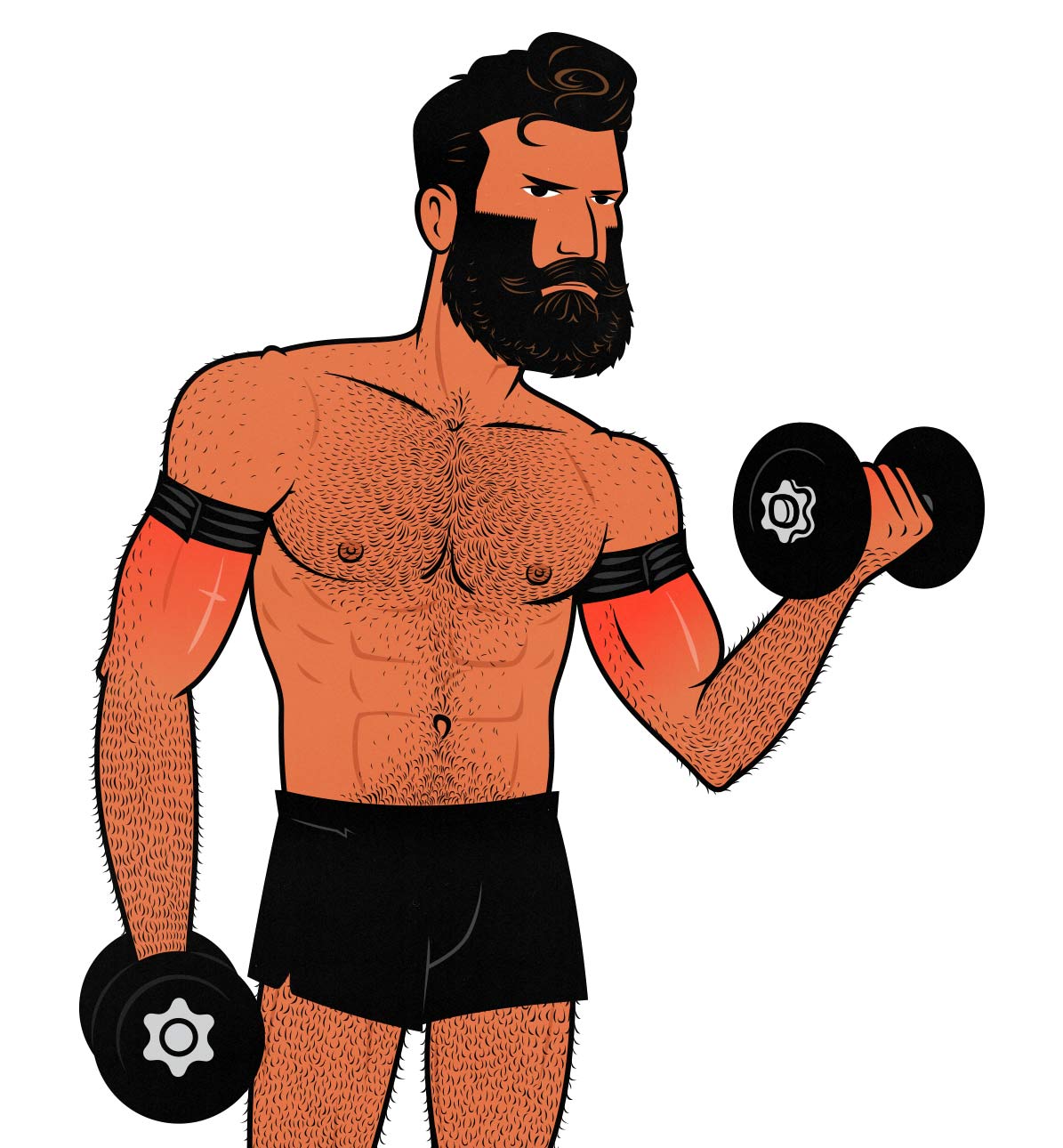
Is BFR Training Good for Building Muscle?
Blood Flow Restriction Training feels like a fad. Right from the very beginning, my intuition was screaming at me, urging me not to be fooled by it. But my intuition was wrong. There’s now been over a decade of rigorous research proving its effectiveness. It’s great for building muscle (meta-analysis, study, study, study).
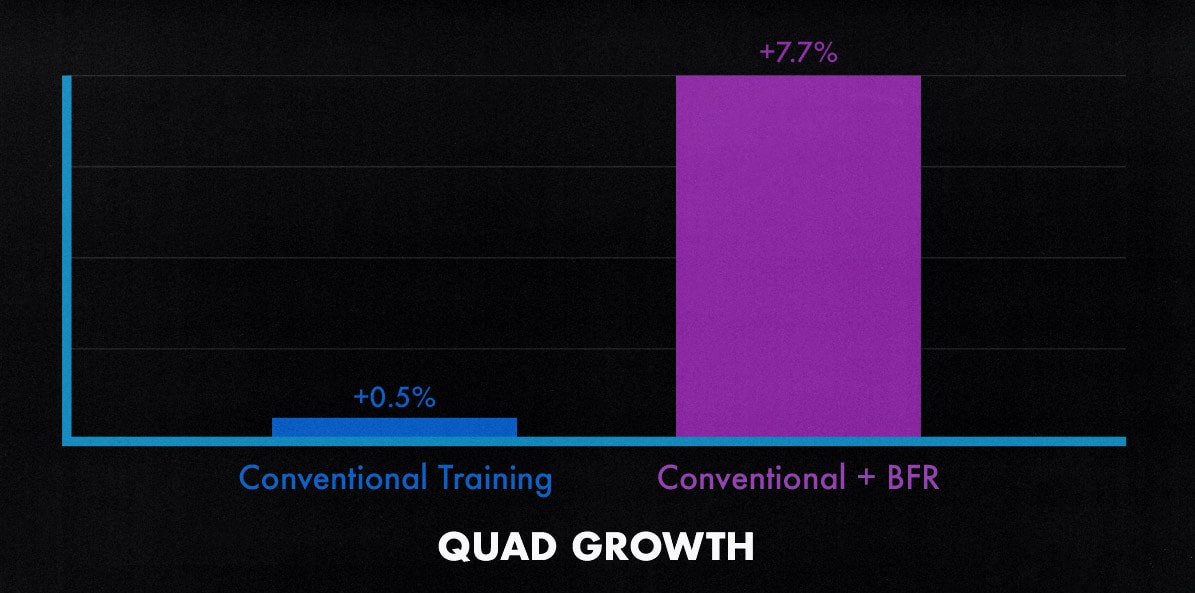
For example, in a study by Bjornsen and colleagues, the competitive powerlifters following a strength training program increased their quad size by 0.5% in 7 weeks. Those who added BFR to their workouts increased their quad size by 7.7% (study). Mind you, this study was done on powerlifters, who are notorious for only doing low-rep sets. If your workout program already includes high-rep training, I wouldn’t expect such extreme benefits.
We also need to consider the opportunity cost. Energy spent on BFR is energy that could have been spent doing something else. That’s where the benefits begin to falter. Doing a few sets of BFR biceps curls is great for building muscle, but it isn’t always better than doing a few regular sets of biceps curls.
The best way to build muscle is with a variety of rep ranges. BFR is a great way to add high-rep sets to your workout routine. You don’t always need it, but it can be a good tool to take advantage of. I especially like using it on guys who are having a hard time building bigger arms.
The Benefits of BFR Training
BFR training makes lifting weights harder, allowing you to stimulate muscle growth more efficiently with lighter weights. It’s great for building muscle when done in addition to lifting heavy weights. Here’s why:
- BFR training recruits more muscle fibres than regular high-rep training. This means you can stimulate quite a lot of muscle growth per set.
- It causes cellular swelling, drawing fluid into your muscles. This temporarily makes them around 10% bigger. While your muscles are swollen, you’ll build more muscle.
- It creates a high amount of metabolic stress in general, sending growth signals to your muscles.
The Downsides of BFR Training
BFR is quite safe, even among the old and infirm (study). Still, many experts recommend avoiding it if you have blood pressure problems or if you’re pregnant.
For people who can tolerate it, there are 4 main downsides:
- You can only restrict blood flow to your arms and legs. You can’t build a full workout program around it.
- BFR adds a bit of a hassle. You need to buy the cuffs and wrap up your limbs.
- It looks strange. Wrapping cuffs around your arms and crying while doing biceps curls can draw the wrong kind of attention. It’s not as bad as neck training, but it’s close.
How to Do BFR Training
How to Wrap the Cuffs
I started doing BFR before it was popular, using compression bandages from the pharmacy. Now you can buy bands made specifically for BFR training from Amazon. They’re easy to fasten and come with measurement marks to keep the pressure consistent from workout to workout.
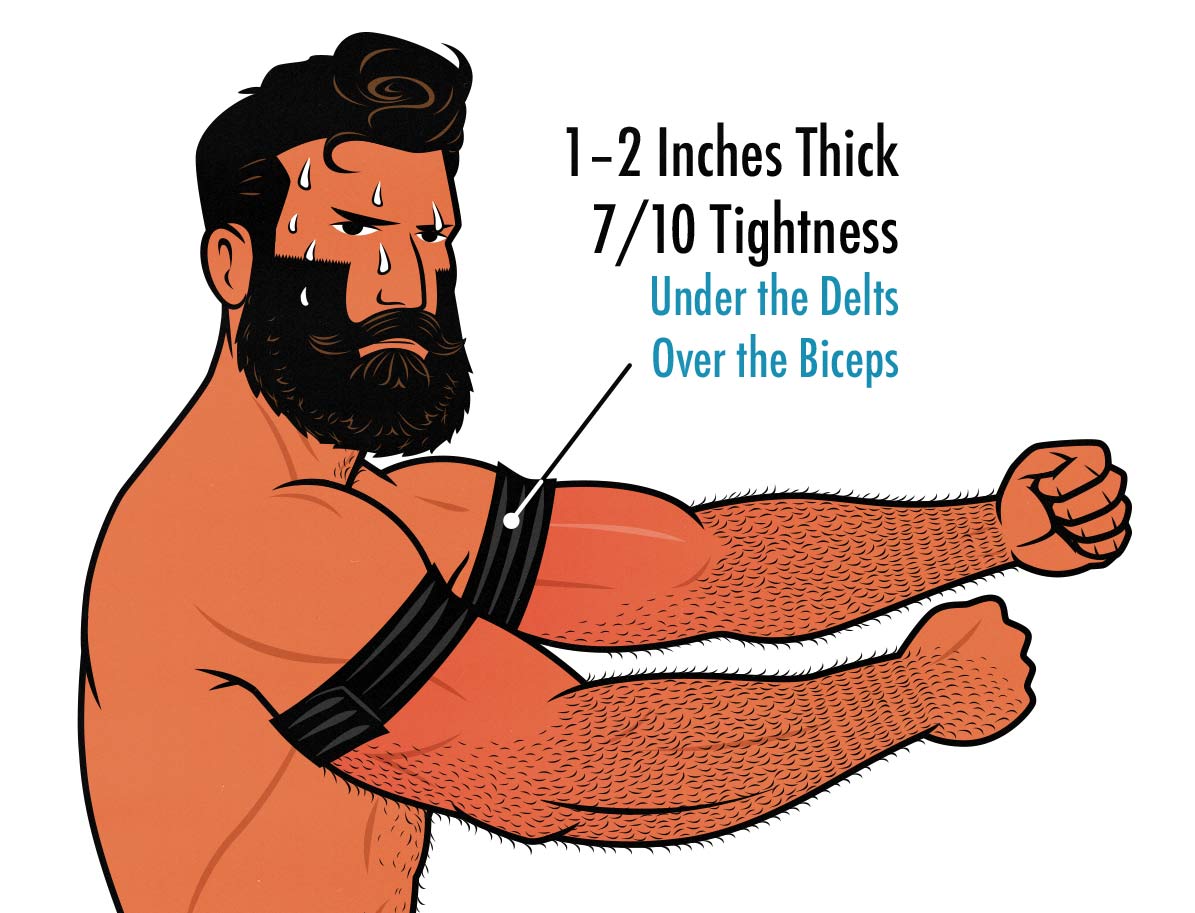
To restrict blood flow to your arms, choose bands that are 1–2 inches wide. Wrap them right beneath your delts and right above your biceps and triceps. You can keep the bands in that same place when training your forearms.
If 10 is maximal tightness, you’d wrap them at a 7. It should feel somewhere between uncomfortable and painful. The burn will hurt when you start grinding out your sets, but the cuffs themselves shouldn’t be overly painful. You’ll know it’s working if you have the biggest pump of your life after finishing your sets. If you’re lean, you’ll also notice extra vascularity.
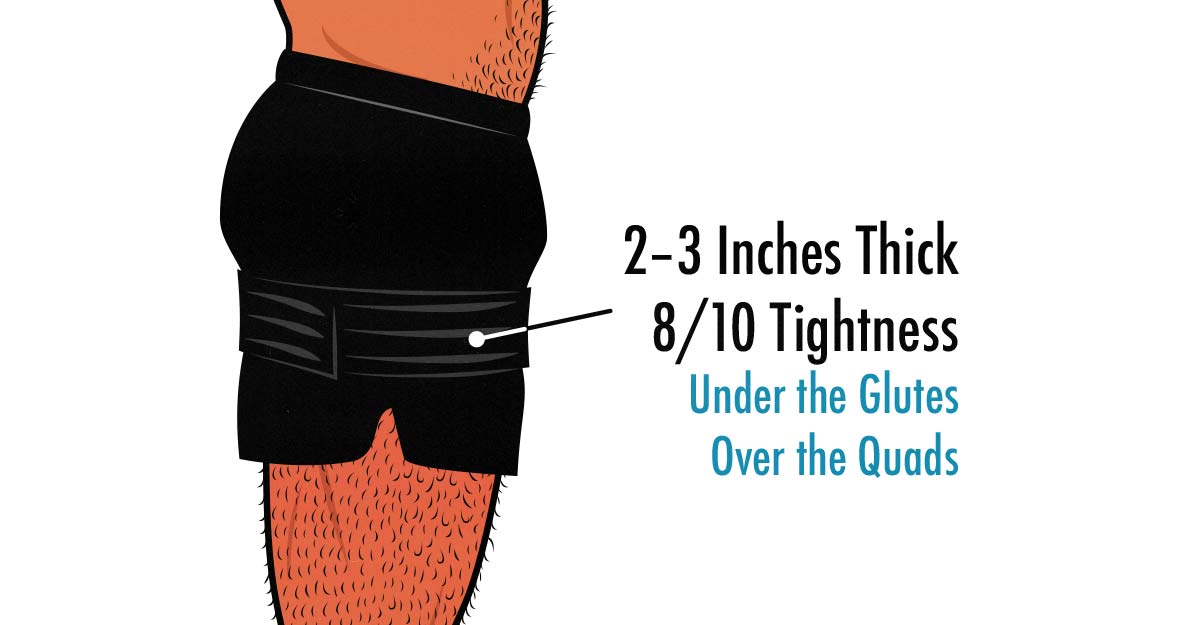
For your legs, choose bands that are 2–3 inches wide. Wrap them right beneath your glutes and right above your quads and hamstrings. You can wrap them a bit tighter than your arms, going up to an 8/10. You can keep the bands there even when training your calves.
How Long to Wear BFR Cuffs
You should keep your BFR cuffs on until you’ve finished every set of an exercise. If you’re doing 4 sets of biceps curls, keep the cuffs on throughout all 4 sets. If you’re also doing triceps extensions and forearm exercises, you can keep the cuffs on for the whole group of exercises.
BFR training uses short rest times, so you should be able to finish training your arms or legs in under 20 minutes. If you can’t, take the cuffs off for a minute before diving back in.
I usually save BFR training for the last couple of exercises of a workout. I’ll wear the cuffs for 5–10 minutes, taking them off right after finishing the last set.
How to Program Your Workout
Researchers have tested all kinds of Blood Flow Restriction Training protocols. The most effective ones tend to use higher rep ranges and shorter rest times. 30-15-15 is by far my favourite.
Start by choosing a weight you can do 30–35 repetitions with. It should be about 30% of your 1-rep max. Then do this:
- 30 reps, rest 30 seconds.
- Go to failure (usually 15–20 reps). Rest for 30 seconds.
- Go to failure (usually about 10–15 reps). Rest for 30 seconds.
Don’t expect to get exactly 15 reps. I’ll often fail at 10–12 reps on the final set. If you’re able to get more than 15 reps on the final set, make sure your weight is heavy enough, your cuffs are tight enough, and your rest periods are short enough.
Don’t forget about progressive overload. Every week, try to add weight or eke out more total reps. You also have the option to add more sets. I’ll often start with 3 sets in the first week, then work my way up to 5 sets over the course of a few weeks.
BFR Workouts
You can do compound exercises with BFR bands on. However, where it really shines is when you do arm or leg isolation exercises at the end of a heavier hypertrophy training or strength training workout. It’s extra volume added on top of what you’re already doing.
BFR Arm Workout
Finish your regular workout, then add this arm workout to the end. Keep the BFR bands on for all 3 exercises. Rest for 30 seconds after each set.
| Exercise | Sets | Reps |
|---|---|---|
| BFR Biceps Curls | 3 sets | 30-15-15 reps |
| BFR Triceps Extensions | 3 sets | 30-15-15 reps |
| BFR Forearm Curls | 3 sets | 30-15-15 reps |
You can choose your favourite variation of each exercise. Simple is usually better. For example, dumbbell curls, dumbbell overhead extensions, and dumbbell forearm curls.
BFR Leg Workout
Finish your regular workout, then add this leg workout to the end. Keep the BFR bands on for all 3 exercises. Rest for 30–60 seconds between each set.
| Exercise | Sets | Reps |
|---|---|---|
| BFR Leg Extensions | 3 sets | 30-15-15 reps |
| BFR Hamstring Curls | 3 sets | 30-15-15 reps |
| BFR Calf Raises | 3 sets | 30-15-15 reps |
You don’t need to use these specific exercises. You could do leg presses instead of leg extensions, or Romanian deadlifts instead of hamstring curls.
Conclusion
Blood Flow Restriction Training is great for building muscle, especially when it’s combined with heavier training. It isn’t better than other forms of hypertrophy training, but it’s as good, and it’s often complementary. You can get the best of both worlds.

If you want the latest muscle-building research and methods, we have a free newsletter. If you want a full foundational bulking program, including a 5-month full-body workout routine, diet guide, recipe book, and online coaching, check out our Bony to Beastly Program (for men) or Bony to Bombshell Program (for women). If you want a customizable intermediate muscle-building program, check out our Outlift Program.



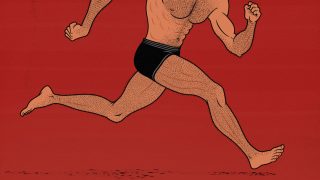
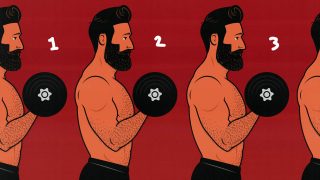
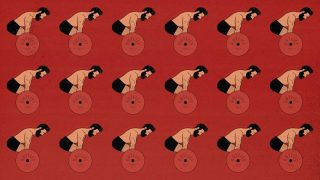
Hi Shane. This is an interesting article, thank you. In an upper body workout that already includes isolation exercises for the arm, would you recommended BFF training for the arm in addition or instead of the isolation exercises?
BFR training isn’t better than regular arm training. If you switch your arm training to BFR, you should make the same gains with a bit less fatigue. But I doubt your arms are overly fatigued, so I’m not sure that would help. If you do the BFR training in addition to your arm training, you should get extra muscle growth without much extra fatigue. That’s probably what you want.